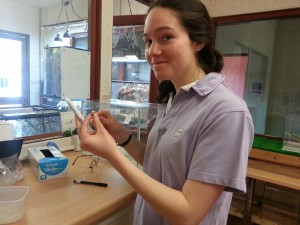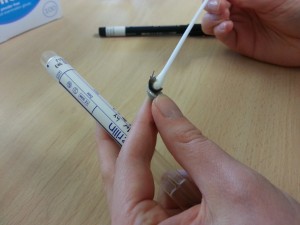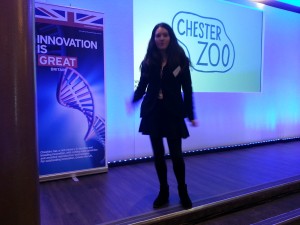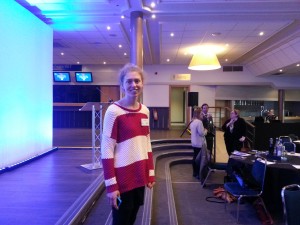With semester 1 complete and our project proposals successfully submitted, we are now all getting stuck into our research projects in various places around the world including Kenya, Zimbabwe and here in the UK. Here is a brief introduction to the research I am going to be conducting over the next 5 months.
For my MRes Wildlife Conservation research project, I am studying genetic changes during the captive breeding programme of the Polynesian tree snail, Partula hyalina. The major threat to this species was the introduction of non-native snail species to Polynesia; Giant African land snails, Achatina spp, were introduced as a source of food but soon began depleting local crops. The carnivorous Rosy Wolf snail, Euglandina rosea, was then introduced as a biological control to combat this problem, but instead predated on the native Partula snails rendering many species extinct by 1987. Several species of Partula are now held in captive populations and are subject to intensive population management. I am using Partula hyalina to model adaptation to captivity, to compare the genetic diversity and genetic distance between fragmented subpopulations and to investigate the occurrence of a genetic bottleneck over the generations in captivity.
Last week I travelled to ZSL London Zoo and met the head of conservation at Biodiversity Underpinning Global Survival (BUGS), Paul Pearce-Kelly. This gave me the chance to collect historic tissue and shell samples for my chosen species, Partula hyalina. Whilst I was there I conducted morphometric measurements on the snails and swabbed them for their slime in order to extract DNA. I also had a tutorial from Fred Naggs, a conservationist at the Natural History Museum, who taught me how to measure the snail shells using Vernier callipers.
- Swabbing the Partula hyalina for DNA
- Swabbing the Partula hyalina for DNA
I am currently in the process of testing my techniques in the laboratory at the University of Southampton. My methods include DNA extraction, amplification via t polymerase chain reaction (PCR)and sequencing to identify the alleles occurring in the captive snail populations. Once sequenced, the DNA will be analysed to test whether a genetic bottleneck has occurred in captivity and the extent to which captive populations have diverged over time. Although I am currently awaiting the arrival of samples from other institutions, I have been very busy practicing the DNA extraction techniques and so far have achieved some promising results!
Aside from the research project, on the 8th March myself and fellow MRes student Rosie travelled up to Chester for the International Conservation and Commercial Breeding Symposium: Innovation, Challenges and Future Directions. We heard some fascinating lectures on reproduction assistance technologies for endangered species. The science behind artificial insemination and oocyte transfer needs to be developed for each species, so there is a lot of work going on in particular for endangered species such as elephants, rhinos, big cats and large canids. We also listened to the latest science and conservation practices for maintaining genetic diversity in wild and captive populations which was extremely relevant to my project.
- Clemmie at the International Conservation and Commercial Breeding Symposium: Innovation, Challenges and Future Directions
- Rosie at the International Conservation and Commercial Breeding Symposium: Innovation, Challenges and Future Directions
Recently, I also presented my project proposal to the University of Southampton’s weekly Conservation Club. This not only gave me the opportunity to practice public speaking but also to receive feedback from other researchers; I found this process really helpful in deciding which statistical analyses will be appropriate for my project.
Keep an eye out over the coming weeks for updates on how the rest of the MRes Wildlife Conservation research projects are going!
Clemmie
Posted By : Danielle Free


